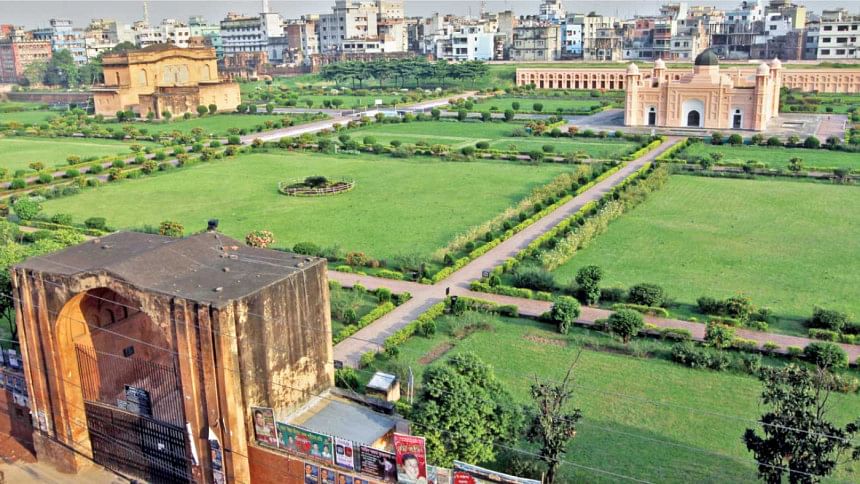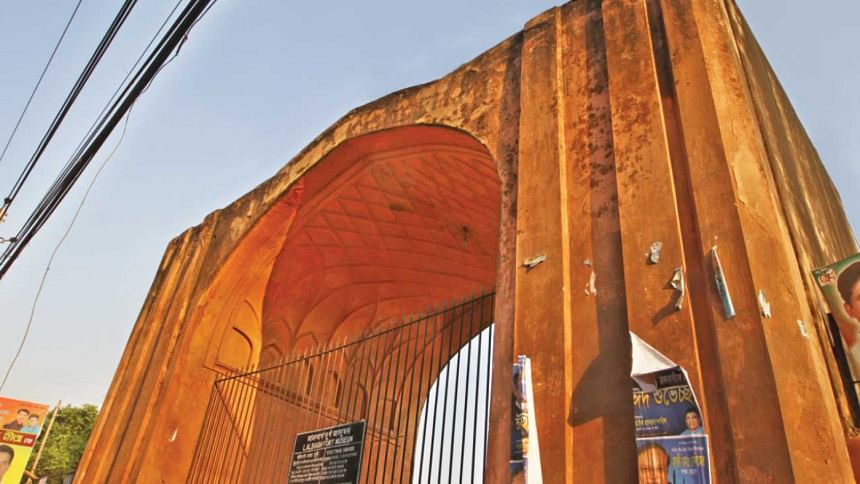LALBAGH FORT

The half-completed Lalbagh Fort and its well-tended gardens are an excuse to escape Old Dhaka's hustle and bustle for an hour or so. Unlike the Sadarghat area, which is full of raw energy, the fort is a slightly melancholic step back into the misty Mughal past of emperors and princesses.
Construction began in 1677 under the direction of Prince Mohammed Azam, the third son of Emperor Aurangzeb, although he handed it to Shaista Khan for completion. However, the death of Khan's daughter, Pari Bibi (Fair Lady), was considered such a bad omen that the fort was never completed. Three architectural monuments within the complex were finished, though: the Mausoleum of Pari Bibi, the Diwan, or Hall of Audience and the three-domed Quilla Mosque all date from 1684.

The only monument you can enter is the Diwan, an elegant two-storey structure containing a small but excellent museum of Mughal miniature paintings, coins, carpets and calligraphy, along with swords and firearms. In the same building, a massive arched doorway leads to the hammam (bath house). Outside is a huge disused bathing tank.
The Mausoleum of Pari Bibi is unusual because of its materials of construction: black basalt, white marble and encaustic tiles of various colours have been used to decorate its interior, while the central chamber, where Pari Bibi is buried, is entirely veneered in white marble.
About 500m past the entrance to the fort, Khan Mohammed Mirdha's Mosque dates from 1706 and is worth a peek, while to the north of the fort is Dhakeswari Temple , the city's main Hindu Temple, and always a lively, colourful affair
SOURCE: LONELYPLANET.COM

 For all latest news, follow The Daily Star's Google News channel.
For all latest news, follow The Daily Star's Google News channel. 



Comments